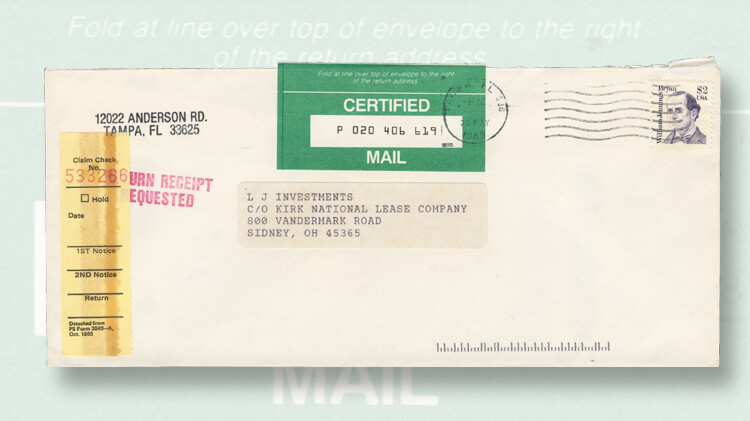World Stamps
A simple explanation of stamp-collecting terminology

By Donna Houseman
Linn’s receives requests from readers for stories on postal history. Sometimes the collector is referring to postal history, but often the writer is requesting stories about history on stamps, or about cover collecting.
What are the differences?
Almost every stamp reflects history or represents a historical perspective. Try to think of stamps that don’t reflect history, regardless of whether the subject matter is art history, pop culture, musical history, or architectural history.
Connect with Linn’s Stamp News:
Sign up for our newsletter
Like us on Facebook
Follow us on Twitter
For the current 2016 United States stamp program, I could come up with only a few stamps that don’t relate to history: the Fruit coil stamps (Red Pears, Grapes, Apples); the Pets stamps; and the Eastern Tailed-Blue Butterfly stamp.
Even the Quilled Paper Hearts stamp issued Jan. 12 has a tie to an intricate art form that historically dates to the 15th or 16th century.
The stamps indeed have historic connections, but when placed on a cover, does the cover become a piece of postal history? The answer is: not immediately.
When you place the stamp on an envelope, the envelope technically becomes a cover. If the envelope has a cachet (a design typically on the left side of the envelope), the cover is more interesting, but it doesn’t yet qualify as postal history.
Address the cover and place it in a mailbox. Now the cover has a chance to become postal history. To be considered postal history, a cover must enter the mail.
Some of the questions that postal history collectors might ask include: Does the stamp on the cover pay the required postal rate? Do the stamps on the cover pay an unusual or complicated rate? What route did the cover take? What stories do the postal markings tell? What methods were used to handle the cover?
The International Federation of Philately (FIP), the governing body of international stamp exhibitions, defines postal history as “exhibits which contain material carried by, and related to, official, local or private mails. Such exhibits generally emphasize routes, rates, markings, usages and other postal aspects, services, functions and activities related to the history of the development of Postal Services.”
Marcophily (postmarks) exhibits and historical, social and special studies exhibits also qualify.
Unless you are a serious exhibitor, you needn’t be concerned with meeting these guidelines.
The cover shown here is a nice, yet simple example of postal history. The 1989 $2 William Jennings Bryan stamp (Scott 2195) exactly pays the correct 25¢ rate for first-class mail during the period April 3, 1988-Feb. 2, 1991, plus the 85¢ fee for certified mail, and 90¢ for a return receipt request.
The cover was sent by a business in Tampa, Fla., to a real estate investment company in Sidney, Ohio, where the offices of Linn’s are located. The wavy-line machine cancel tying the stamp to the cover is dated May 26, 1989.
A Linn’s editor found this nifty item while sorting through a group of covers.
Pay close attention to how the stamps and markings on a cover are used, the rates paid, and the routes taken, and you, too, can be a postal history student.
MORE RELATED ARTICLES
Headlines
-
US Stamps
Oct 7, 2024, 3 PMMcMurtrie dismissed as APS education director following Sept. 21 arrest
-
US Stamps
Oct 7, 2024, 12 PMVasiliauskas named president of Mystic Stamp Co.
-
US Stamps
Oct 6, 2024, 5 PMApgar souvenir card available
-
US Stamps
Oct 6, 2024, 4 PMFirst Continental Congress and U.N. stamps receive Scott catalog numbers








